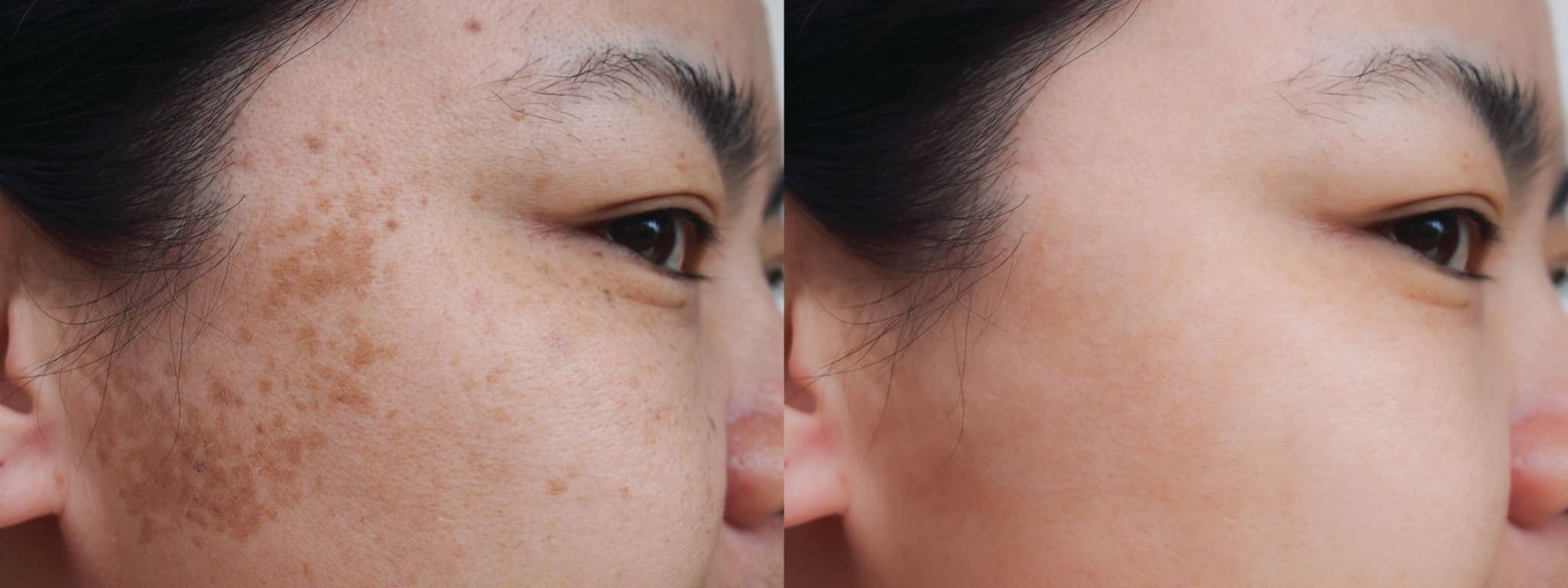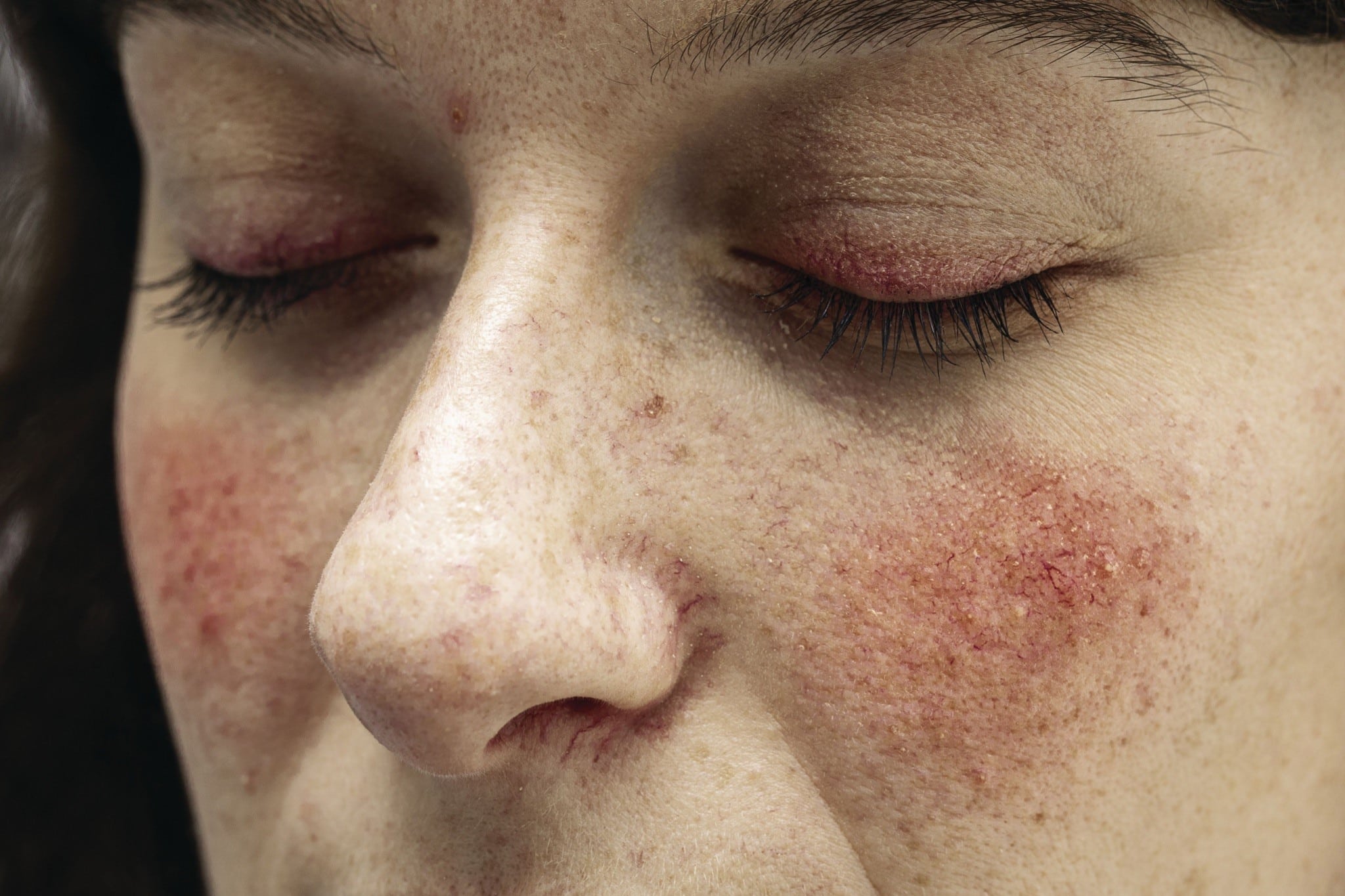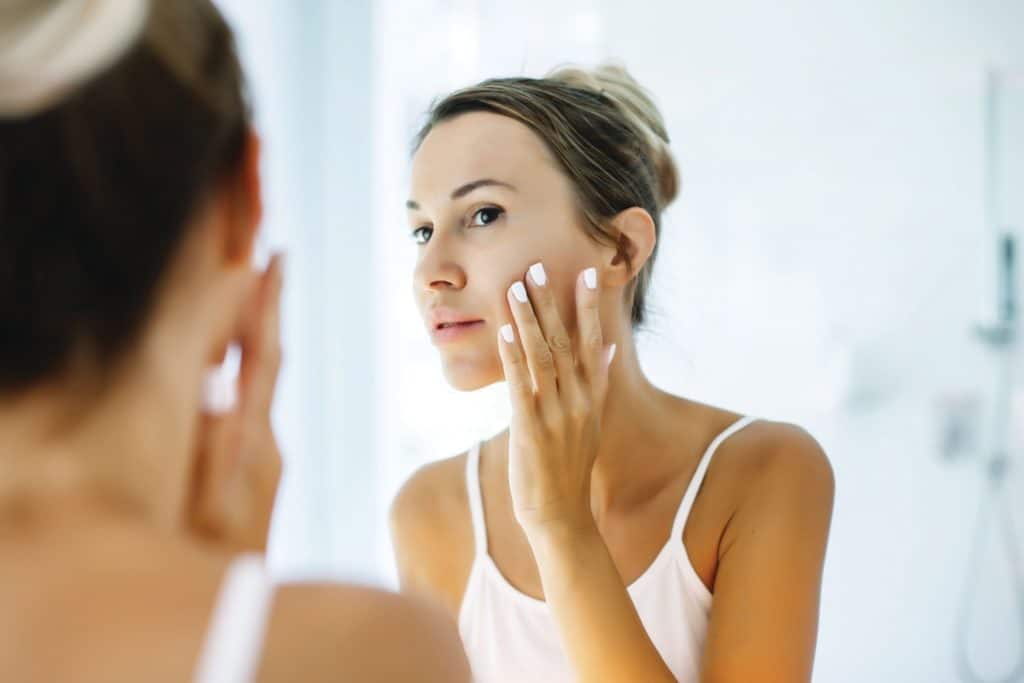Melasma and rosacea are common skin conditions that can be well managed with proper care.
The experts at Florida Westcoast Skin and Cancer Center are highly trained in various treatments for these conditions and look forward to helping your patients manage their symptoms and have the best skin possible.
MELASMA
What is melasma?
Melasma is a common skin problem which causes brown to gray- brown patches, usually on the face. Most people show symptoms on their cheeks, bridge of their nose, forehead, chin, and above their upper lip. It can appear on other parts of the body that get sun exposure, such as the forearms and neck.
Who is more at risk for getting melasma?
Melasma is most often found on women’s skin; with only 10% of those diagnosed being men. People with darker skin, such as those of Latin/Hispanic, North African, African-American, Asian, Indian, Middle Eastern, or Mediterranean descent are more likely to get melasma. Anyone with a blood relative who has/had melasma are also at a greater risk
What triggers melasma?
- Sun Exposure: UV light, even in small amounts, stimulates melanocytes which often causes a flare up of symptoms.
- Hormone Changes: Pregnancy, birth control, and hormone replacement medicines can all cause triggers in melasma. When melasma appears in pregnant women it is called chloasma.
- Skin Irritation: If any products are used on the skin that cause irritation, it can potentially cause a flare up in symptoms.

ROSACEA
What is rosacea?
Rosacea is a common skin disease that often begins with a tendency to blush or flush more easily than other people. There are four subtypes:
1. Erythematotelangiectatic rosacea: Symptoms include redness, flushing, and visible blood vessels.
2. Papulopustular rosacea: Symptoms include redness, swelling, and acne-like breakouts.
3. Phymatous rosacea: Symptoms include thickening of the skin and a bumpy texture.
4. Ocular rosacea: Symptoms include red and irritated eyes and swollen eyelids.
Who is more at risk for getting rosacea?
- People between 30 and 50 years of age.
- Those who are fair-skinned, and often have blonde hair and
blue eyes. - Those from Celtic or Scandinavian ancestry.
- Those with family history of rosacea or severe acne.
- Women are more likely than men to get rosacea, however, men are more likely to have severe cases.
What triggers rosacea?
There are many potential triggers for rosacea. The best thing a person can do is try to identify which triggers cause their particular flare ups and make lifestyle changes to limit them. Below are a list of common triggers:
- Sunlight
- Stress
- Heat
- Alcohol, especially red wine
- Spicy foods
- Some skin and hair care products
- Some makeup
- Wind and cold
- Some medicines
- Exercise

At Florida Westcoast Skin & Cancer Center, we offer the following treatments and products for melasma and rosacea patients:
Melasma
- Chemical Peels
- SkinCeuticals Phloretin CF
- Advanced Pigment Corrector
- Glycolic 10
- Retinol

